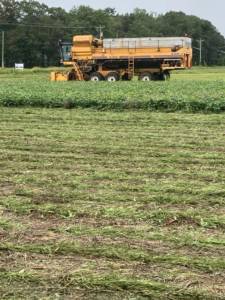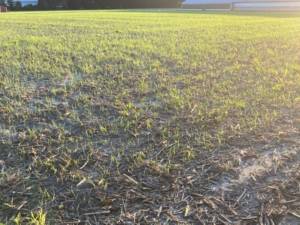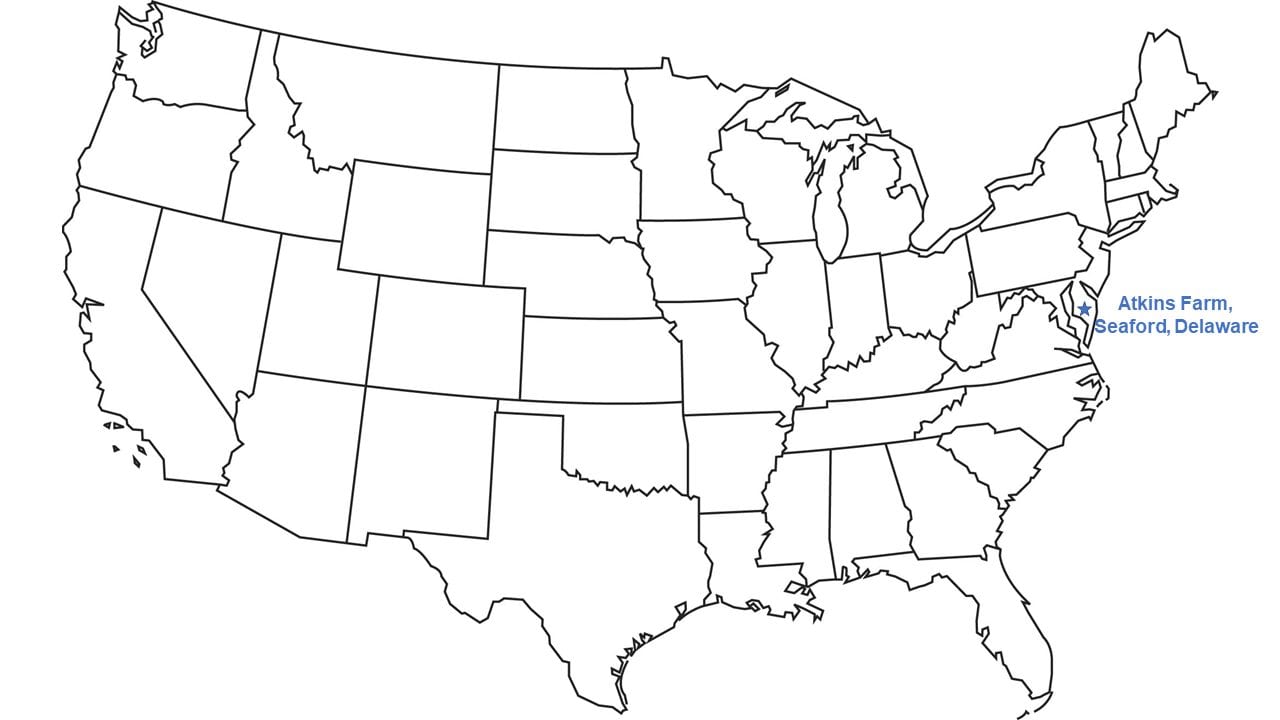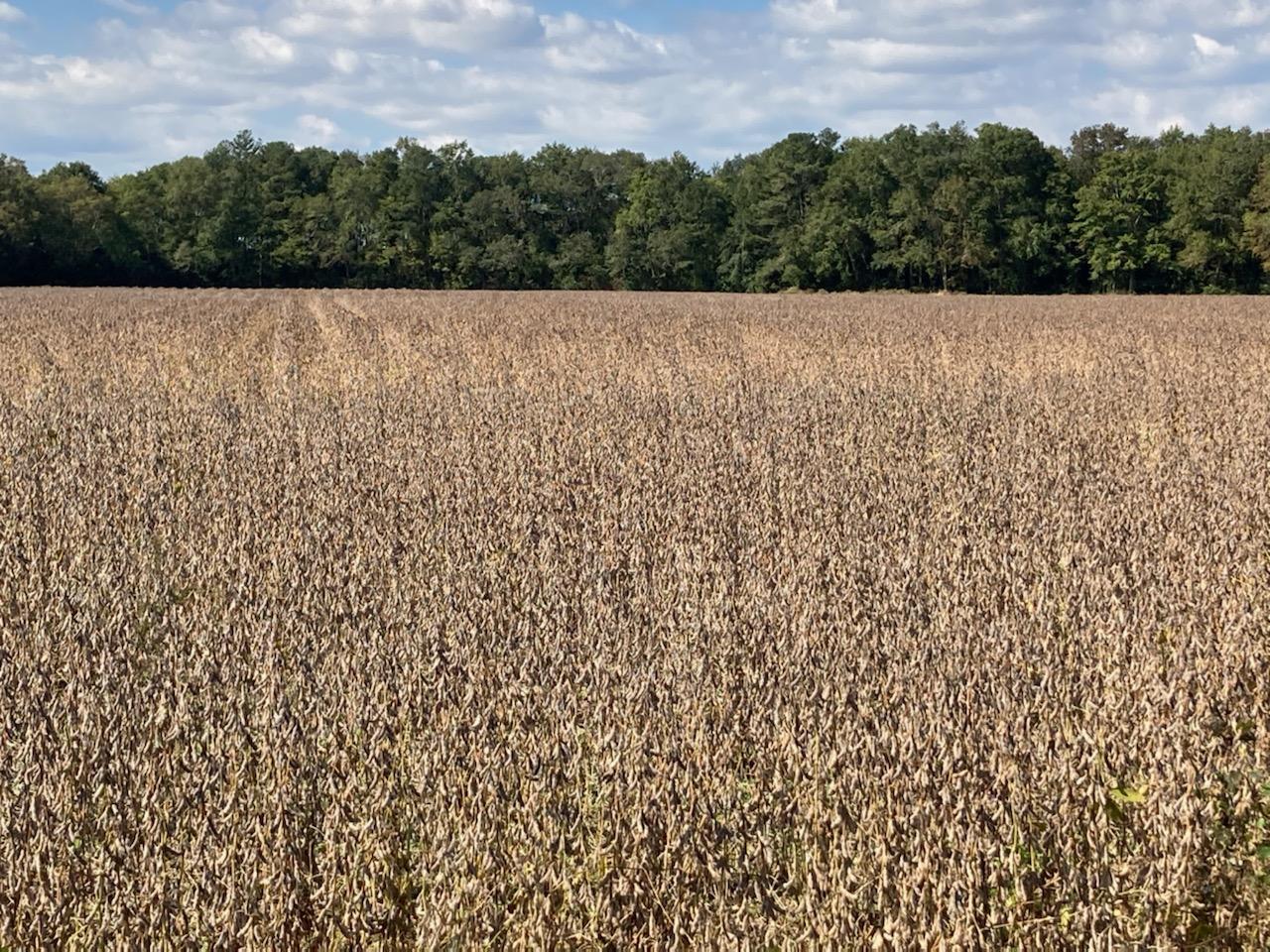
Harvest is going slowly in my area of the U.S. East Coast, thanks to some rain at the end of September and temperatures that have the corn drying very slowly in the field. Overall, yields have been better than expected – though my expectations were really low because of the dry summer.
The vegetable company I grow for harvested my early lima beans during the third week of September. The crop was decent for non-irrigated lima beans. They will let me know when they come to harvest my late-planted lima beans later this month.
My early-planted soybeans will be ready to cut any day. I am checking them regularly, and they will be the priority to harvest when they reach that point. They look good, and I expect average or just above average yields.
My double-crop soybeans are already starting to senesce, or turn yellow and drop their leaves. They are turning faster than I expected, but I did plant a shorter-season variety than I have in the past so they would be ready a bit sooner.
Because of the weather and how slowly corn was drying in the field, I was only able to harvest about 10 to 15% of my corn acres in September. So far, corn yields have been about average, which is better than I expected. Average doesn’t always completely pay the bills, but it’s better than a crop insurance check.

My fields received between 8 and 18 cm, or 3 to 7 inches, of rain at the end of September, which kept me out of the field for a few days. Before that, the corn kernels were about 20% moisture, and I prefer to pick corn when it is at 18% moisture. Right now I have plenty of time to allow the corn to dry in the field, but eventually I will lose some of that flexibility.
As October starts, it’s a toss-up whether I will harvest soybeans or corn next. I am monitoring fields closely to figure that out each day.
The slow pace of harvest so far has allowed me to plant cover crops in the fields that have been harvested so far. I typically broadcast wheat or a wheat/clover mix of seed over the top of a harvested field. I use the wheat I harvested this summer as cover crop seed. Then I use a vertical tillage tool to lightly incorporate that seed into the soil to help it get started. The moisture we’ve received will also help the cover crops grow.
Later in the season, I may not have as much time to plant cover crops immediately after harvesting. Eventually I will reach a point in the season, usually in November, where a cover crop won’t have time to get established to protect the soil. At that point, I will just leave the soil undisturbed over the winter, rather than risking not getting the cover crop established.
For my seed business, I’ve delivered the cover crop seed that was ordered for this fall. I am starting to call on other farmers to encourage them to start thinking about soybean and corn seed for next season.
My newborn son is doing well – although it will be nice when he sleeps better at night!

